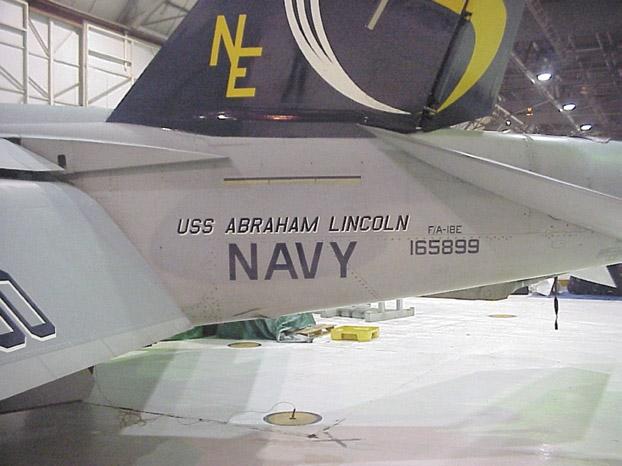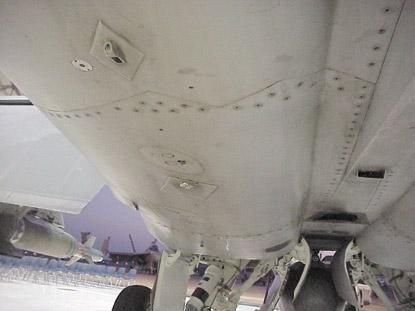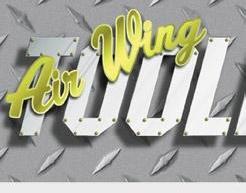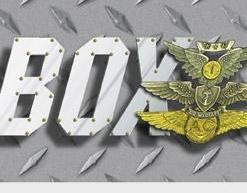
6 minute read
Job Complete or Not?
By AD2 (AW) John Ridgeway
Iarrived at work on time and began the morning toolinventory check. It looked like a slow schedule for my work center—a bit unusual for the troubleshooters. It felt like it just would be another routine day at our super hornet squadron, but that confidence was about to change. Little did I know that, before the day was over, I would make a mistake that could have hurt or killed a shipmate.
Advertisement
Because the workload was light, I offered to help my fellow mechs install a few 414 engines. Since the shop was short-handed and busy as usual and because I am a collateral duty inspector (CDI), they gladly accepted my offer. The job began like all engine installs do: nice and slow to make sure all cavity inspections and runon torques are done thoroughly before the engine gets installed. As the CDI in charge of the evolution, I was responsible for making sure that all procedures in the maintenance instruction manual were being followed. After fully installing the port motor and all accessories and doing a QA check of all torques, the aircraft now was ready for the engine-bay doors: 64L and 68L. Door 68L quickly was installed, but door 64L only was tacked on, so we could drop it during the low-power turn to check for leaks. The low-power turn was a complete success, and the only thing left was to “button up” door 64L com
Doors 64L and 68L are aft on the Hornet and usually are not tough to remove.

in NALCOMIS. Like I said, the procedure is a strange
I headed over to the AZs to ask about my log in. They explained the procedure to me, but I got frustrated and lost my temper. That action was the first step in the wrong direction. I honestly can remember every last word that I had with the AZs about log in, but I cannot remember at what point I got it in my mind that the job was complete. Unfortunately, that false All panels must be securely fastened notion got lodged in before fl ight. A quick look usually can my head, and I went determine if all fasteners are in place. back to the shop to sign off the MAF as job complete. In reality, though, pletely and have QA check it. Once that was done, we door 64L only was tacked on, and now the MAF was could sign off the MAF as job complete. Unfortunately, signed off. The system showed the jet was available for it was time for shift change, so we had to stop the job the flight schedule. and sign the job as “in process.” It was dark outside when the PC started his
Three of us did an ATAF of our tools and took walkaround, getting ready to launch the jet. The pilot everything back to the shop, so we could do a proper who was going to fly the jet did a preflight. Neither of day-check/night-check turn over. I next marked the them noticed that door 64L simply was tacked on. ForMAF as “in process” and gave the oncoming nighttunately, the jet went down for an unrelated gripe. It wasn’t until another PC went to put the Little did I know that, before the day pins in the jet that the tacked-on door was over, I would make a mistake that was noticed. I was the CDI and had lost focus could have hurt or killed a shipmate. of the job at hand. I was so concerned checkers a complete passdown of what was left to do on door 64L wasn’t installed completely. I had let my emothe aircraft. tions get the best of me and did not think clearly when
Everything sounds good so far, right? Well, this is my normal habit pattern got disrupted. where my normal habit pattern broke down. Because of I truly am grateful that 205 didn’t taxi and didn’t fly. a strange quirk in NALCOMIS and because I wasn’t a It could have ended in tragedy. I am wiser and learned a troubleshooter CDI yet, I couldn’t be identified permavery valuable lesson that every maintainer should know. nently in NALCOMIS as a CDI just for power plants. We must stay focused on the task from beginning to Every time I have to sign off a MAF as a CDI for power end. Our shipmates count on us, and people’s lives are at plants, I have to ask the AZs to give me the permissions stake. with my log in that I completely forgot quirk, but one the department implemented to comply Petty Officer Ridgeway is the troubleshooter shop superviwith the NAMP. sor at VFA-137.

New Antenna Gaskets Eliminate Corrosion and Precipitation Static



By Thomas Doughty
Engineers from the Naval Air Systems Command (NAVAIR) have identified a new, environmentally friendly, and conductive gasket that guards against moisture intrusion and subsequent corrosion. This product does so while providing improved electrical bonding between aircraft aluminum substrate, mounting base of aircraft antennas, and static-discharger mounts.
Corrosion maintenance on aircraft surfaces and attaching hardware is a frequent and costly problem. Attach points such as static-wick mounts and blade antenna mating surfaces are just a few examples of areas that are corrosion prone and that seriously degrade the performance of electronic equipment, especially communication systems. These problems acutely degrade mission capability and require frequent troubleshooting and hardware replacement.
A new commercial-off-the-shelf-technology (COTS), produced by Aviation Devices and Electronic Components (AvDec™), is a conductive gasket, consisting of a cured polyurethane gel that encapsulates an aluminum wire mesh, which has been identified to provide improved electrical bonding between aircraft aluminum substrate and the mounting base of aircraft antennas and static discharger mounts. The focus of this technology is to seal and protect mating areas against moisture and subsequent corrosion while at the same time provide a mechanism for electrical bonding and grounding. The gasket is designed so that once the mounting screws are installed and torqued, com

pression squeezes some of the polyurethane gel to the outside edge of the antenna mount providing a small perimeter seal, thus eliminating the need for additional polysulfide sealing. That sealant is required each time a technician removes and replaces an antenna or static wick mount. The polysulfide sealant (MILPRF-81733) contains hexavalent chrome as a corrosion inhibitor and is used around the perimeter at the base of the antenna or static wick mount to prevent moisture intrusion. These technicians are being exposed to carcinogens that are embedded within the polysulfide sealant, and the excess sealant is a hazardous material that must be disposed of properly. The installation process is a labor-intensive procedure that severely impacts aircraft availability and operational readiness. With approximately 4,000 aircraft in the fleet, the use of the AvDEC™ conductive gasket will eliminate the requirement for using chromated polysulfide sealants, thus saving thousands of dollars in labor, material and disposal costs. Additional benefits include the elimination of airborne communication precipitation static (Pstatic) discrepancies caused by corrosion.
The NAVAIR Aerospace Materials Division AIR 4.9.7 successfully tested the gasket for temperature resistance, fluid compatibility, corrosion, and lightning strikes. The gasket material survived exposure to aircraft fluids and maintained it’s electrical performance (2.5 milliohms or less) throughout all conditions, including corrosion testing. Following these tests, AIR 4.9.7 was granted approval to conduct field evaluations










